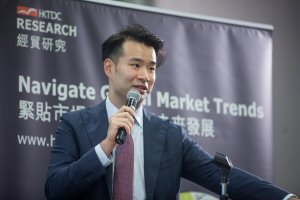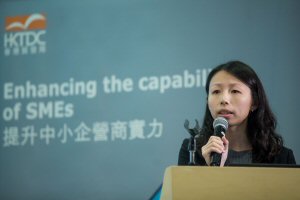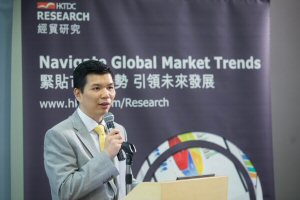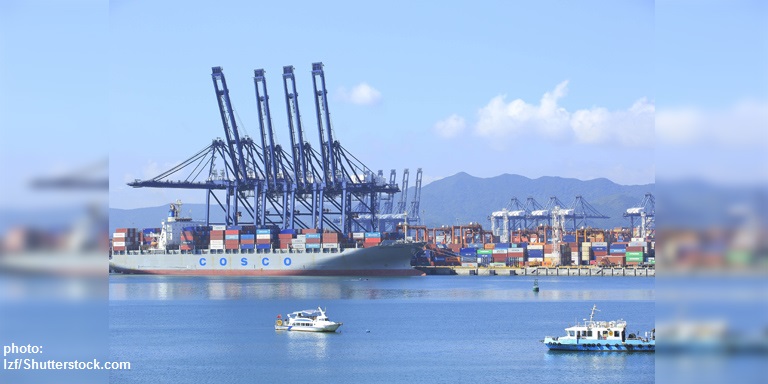Trade talks between Mainland China and the United States resumed earlier this month but consensus has yet to be reached. As the US continues to impose additional tariffs on many mainland imports, Hong Kong traders are looking to cushion the impact by actively shifting some of their production or procurement bases to Association of Southeast Asian Nations (ASEAN) countries that benefit from America’s Generalized System of Preferences (GSP).The Hong Kong Trade Development Council (HKTDC) organised a seminar titled “Sino-US Trade Dispute: How the US GSP Programme Fits in the Supply Chain Strategy” on 16 August at the Hong Kong Convention and Exhibition Centre (HKCEC), with HKTDC Assistant Principal Economist (Global Research) Louis Chan as the moderator. Sally Peng, Asia Pacific Practice Group Leader at the law firm Sandler, Travis & Rosenberg Ltd, and Henry Fung, a Manager with the firm, provided practical tips to help local companies take advantage of the zero or low tariffs offered to developing countries by the US. Leanne Ma, Senior Administrative Officer (Industries Support) from the Trade and Industry Department of the Hong Kong Special Administrative Region (HKSAR), introduced enhancement measures for the Dedicated Fund on Branding, Upgrading and Domestics Sales (BUD Fund), while Band Yeung, Assistant General Manager at the Hong Kong Export Credit Insurance Corporation, briefed participants on the special enhanced measures to help local exporters cope with rising credit risks amid the current uncertainties. More than 100 representatives from local small and medium-sized enterprises (SMEs) joined the seminar.
Optimising supply chain through GSP

ASEAN countries such as Cambodia, Indonesia, Myanmar, the Philippines and Thailand benefit from the GSP. The GSP eligibility of Turkey and India was removed earlier this year while that of Thailand, Indonesia and Kazakhstan is under review. Ms Peng and Mr Fung explained the GSP mechanism and highlighted how, to cope with the business challenges brought about by the trade dispute, local companies can take GSP possibilities into account when adjusting or optimising their supply chains.|Mr Fung noted three qualifying requirements for GSP − direct import, “product” of beneficiary developing country (BDC) and a 35% minimum value content. For articles imported directly from a BDC, they must be imported without passing through the territory of any other country. If the shipment is from a BDC to the US through the territory of any other country, the merchandise cannot enter the commerce of any other country while en route to the US. The invoice, bill of lading and other shipping documents should show the US as the final destination.He went on to elaborate that articles must be grown, produced, or manufactured in a BDC. If articles are made of imported materials, those materials must undergo a Double Substantial Transformation in the BDC for the article to qualify as a “product” of the BDC. Inputs from member countries of the same association of countries will be treated as single-country inputs for the purposes of determining the origin. Imported material must be transformed in the BDC into a new and different material with a new name, character and use. Using the example of “wet blue” split leather from a non-BDC that is processed into finished leather in a BDC, he pointed out that the finished product cannot be regarded as “originating” from the BDC as it does not constitute a Double Substantial Transformation. However, plastic film roll stock undergoing printing, cutting and lamination before the conversion operation into a finished bag can be regarded as Double Substantial Transformation.
The sum of the cost or value of materials produced in the BDC and the direct costs of processing operations must equal at least 35% of the appraised value of the article. Mr Fung said the value of originating materials includes the manufacturer’s actual cost for materials, freight, insurance, packing and all other costs associated with transport to the manufacturer’s plant and taxes imposed on materials by the BDC and the actual cost of wastage.Mr Fung reminded exporters to keep records of origin, the cost of direct processing operations and value, such as origin certificates and raw-material purchasing records. They should also ship merchandise into the US “using reasonable care”.
SMEs encouraged to explore ASEAN markets

Ms Ma introduced enhancement measures for the government’s BUD Fund that was set up to help Hong Kong enterprises capture opportunities in mainland and ASEAN markets, as well as other support measures provided by the HKSAR Government. Ms Ma said the government extended the geographical scope of the BUD Fund from the mainland to ASEAN countries in August 2018, adding that the funding ceiling per enterprise has been increased from HK$500,000 (about US$64,100) to $2 million, including $1 million for the mainland market and $1 million for the ASEAN market.
Ms Ma also presented the SME Export Marketing Fund, advising participants that the cumulative funding ceiling for enterprises under this scheme has been increased from $200,000 to $400,000 with conditions regarding the last $50,000 of grants being removed. Up to 31 July 2019, a total of 48,657 enterprises, including the trade, wholesale and electronics sectors, have benefited from this measure. The SME Loan Guarantee Scheme provides loan guarantees to SMEs to help them secure credit from participating lending institutions for acquiring business installations and equipment or for general working capital, with the maximum guarantee for each SME being $6 million.

At the seminar, Mr Yeung introduced the Hong Kong Export Credit Insurance Corporation’s special enhanced measures, such as the small business policy and Online Micro-Business Policy, that have been introduced to help local exporters cope with rising credit risks amid the current uncertainties.
Related links
BUD Fund
Hong Kong Means Business US Trade Page
Sandler Travis & Rosenberg
SME Corner

